


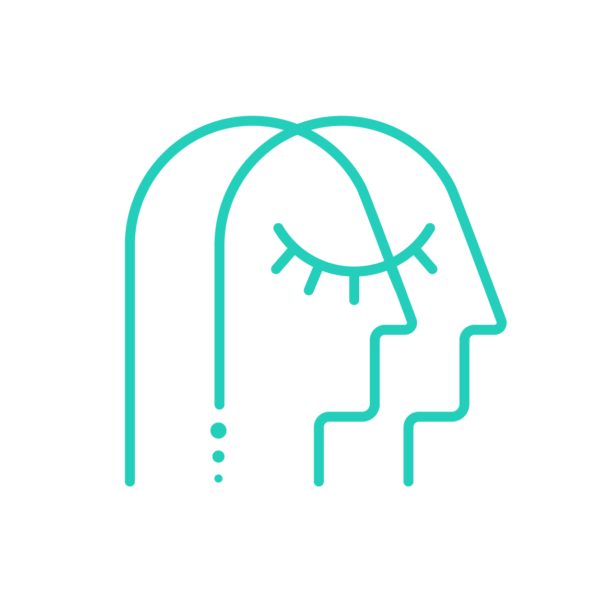

Feeling constantly, “on” or like you can’t stay ahead? Maybe you’ve tried meditation before but you didn’t really feel like you could get into it. Traditional meditation practices have been revered for centuries for their ability to calm the mind and reduce stress. However, an innovative solution has emerged to complement and enhance the meditation experience: virtual reality (VR). Let’s dive into VR meditation to help you answer this question for yourself: should I use virtual reality to meditate?
Meditation has proven benefits, including stress reduction, improved focus, and increased emotional resilience. Many people, of course, have discovered its advantages, but they might find it challenging to commit to a consistent practice. Distractions, restlessness, and the inability to find a serene environment are common roadblocks. This is where VR meditation, with Healium at the forefront, offers an intriguing alternative.
Healium is a groundbreaking VR platform designed to address these challenges. It offers you the opportunity to immerse yourself in a range of serene and tranquil virtual environments, each carefully crafted to promote relaxation and mindfulness. As you put on VR goggles, you can find yourself transported to a calming beach, a peaceful forest, or a tranquil garden, providing instant access to the soothing benefits of nature without leaving the comfort of your own space.
The immersive quality of VR is what sets Healium apart from traditional meditation. In a VR environment, you’re not just visualizing a serene setting; you’re stepping into it. The sound, visuals, and even the sensations can be incredibly lifelike, enhancing your overall meditation experience. This immersion helps to whisk you away from the stresses of the real world, making it easier to focus and unwind. What we like to say around here–the brain believes what it sees.
Imagine feeling the warmth of the sun on your skin as you stroll along a virtual beach or hearing the gentle rustle of leaves in a forest while sitting on your living room couch. This level of immersion can make meditation more engaging and enjoyable, which can be especially helpful for those who struggle with traditional methods.
Virtual reality offers a variety of experiences, allowing you to choose the setting that resonates most with you. Whether you prefer the sound of ocean waves or the quiet ambiance of a peaceful garden, you can tailor your meditation environment to suit your preferences. This variety can help keep your meditation practice fresh and prevent monotony, ensuring that you stay engaged and committed to your mental health goals.
The VR headset is a physical barrier between you and your distracting environment. It’s much easier to tune your focus on the content in front of you, rather than trying to ignore multiple devices.
One of the most compelling aspects of Healium is that it’s clinically validated. Scientific studies have shown that using this VR meditation platform can lead to better self-management of stress and anxiety. The incorporation of biofeedback, such as tracking heart rate and brainwave activity, allows Healium to adjust the virtual environment in real-time to give you feedback on your practice.
This means that, while you’re meditating in VR, the environment responds to your physiological responses. As your stress levels decrease, the virtual world around you becomes even more peaceful, reinforcing your sense of calm.
Meditation is a powerful tool for maintaining mental well-being, and in our technologically driven age, VR meditation offers a fresh and engaging alternative. Healium’s clinically validated solution, with its immersive quality, variety of experiences, and real-time feedback, can provide a highly effective and enjoyable way to reduce stress and anxiety.
If you’ve been curious about alternative methods of meditation or have found traditional approaches challenging, consider giving Healium VR a try. It’s a glimpse into the future of meditation, where the benefits of nature and mindfulness can be experienced like never before, all with the ease and convenience of a VR headset.
Jump to: Mental Resilience Training | How Healium Works | The Science Behind Healium | Anxiety | Mood | Positivity
Arlington County Police Department Pioneers New Officer Wellness Tools
Less than 20% of police officers seek help for mental health concerns according to a recent article from Walden University.
Law enforcement officers routinely face high-pressured situations that require sound decision making. When you’re stressed, that decreases working memory which increases the likelihood of errors. Whether you’re a police officer, a nurse, or a pilot, these “worker athletes” benefit from drugless solutions to boost their human performance.
 According to the American Police Officers Alliance, alcohol abuse, depression, post-traumatic stress disorder (PTSD), and suicidal thoughts are common mental concerns for officers around the US. In fact, 1 in 4 officers contemplate suicide.
According to the American Police Officers Alliance, alcohol abuse, depression, post-traumatic stress disorder (PTSD), and suicidal thoughts are common mental concerns for officers around the US. In fact, 1 in 4 officers contemplate suicide.
Departments are finding new, engaging ways to improve mental fitness within their own teams. Emerging tactics include destigmatizing seeking help, centralizing resources internally and forming strategic partnerships with health organizations. The Arlington County Police Department has also introduced immersive media for mental resilience training and recovery. Recently, the ACPD launched a wellness initiative for officers through a partnership with Cummings Foundation Behavioral Health.
The new initiative introduces Virtual Reality Stress Management Training using Healium’s software. The officers are using VR headsets to interrupt the stress response, provide vi
rtual nature experiences, and create stored memories that can be recalled in stressful situations.
Five peer-reviewed journal publications show Healium’s impact on anxiety, positivity, and mood improvement. Officers will be able to experience calm in as little as four minutes through these virtual nature escapes that have the option of being powered by wearables that allow the user to see their own brain patterns or heart rate inside virtual worlds.

For more information on virtual reality as a drugless non- harmful coping mechanism for you or your team, visit tryhealium.com.
The benefits of neurofeedback are endless. Better sleep, increased concentration, impulse control, and more. But when we talk about “seeing your feelings”, what do we really mean and why is that important?
The first step in controlling your feelings is measuring them. Feelings have physiological effects on the body which are easily measured. For example, a calm feeling appears as slower brainwave activity in the frontal lobe and a lower heart rate.
Neuroscientists use an EEG cap to evaluate the electrical activity in the brain by placing electrodes on the scalp.
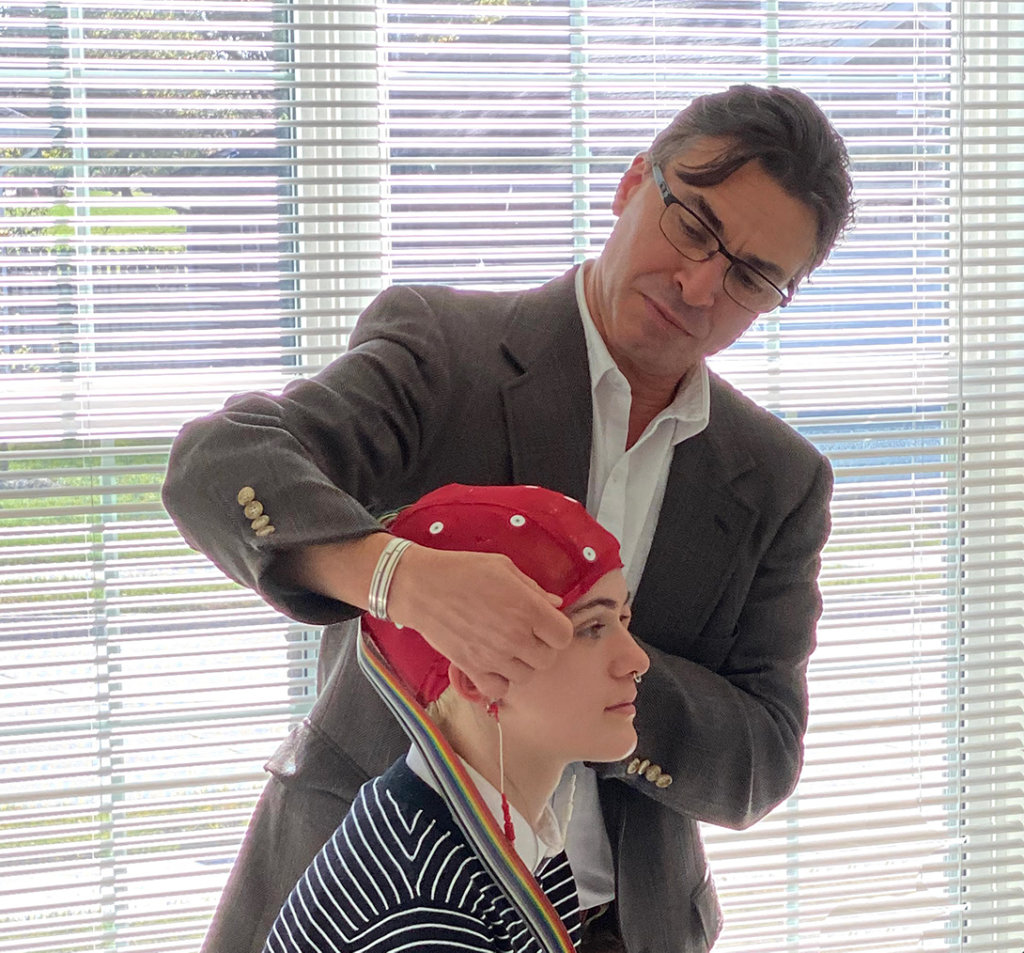
Luckily, consumer wearables, such as a BrainLink EEG headband, are more widely accessible in order to gather an overview of brain activity. While these consumer headbands cannot capture all areas of your brain like a full 19 sensor EEG cap, they can give you a helpful snapshot of your brain wave patterns, especially when paired with interactive or immersive media.
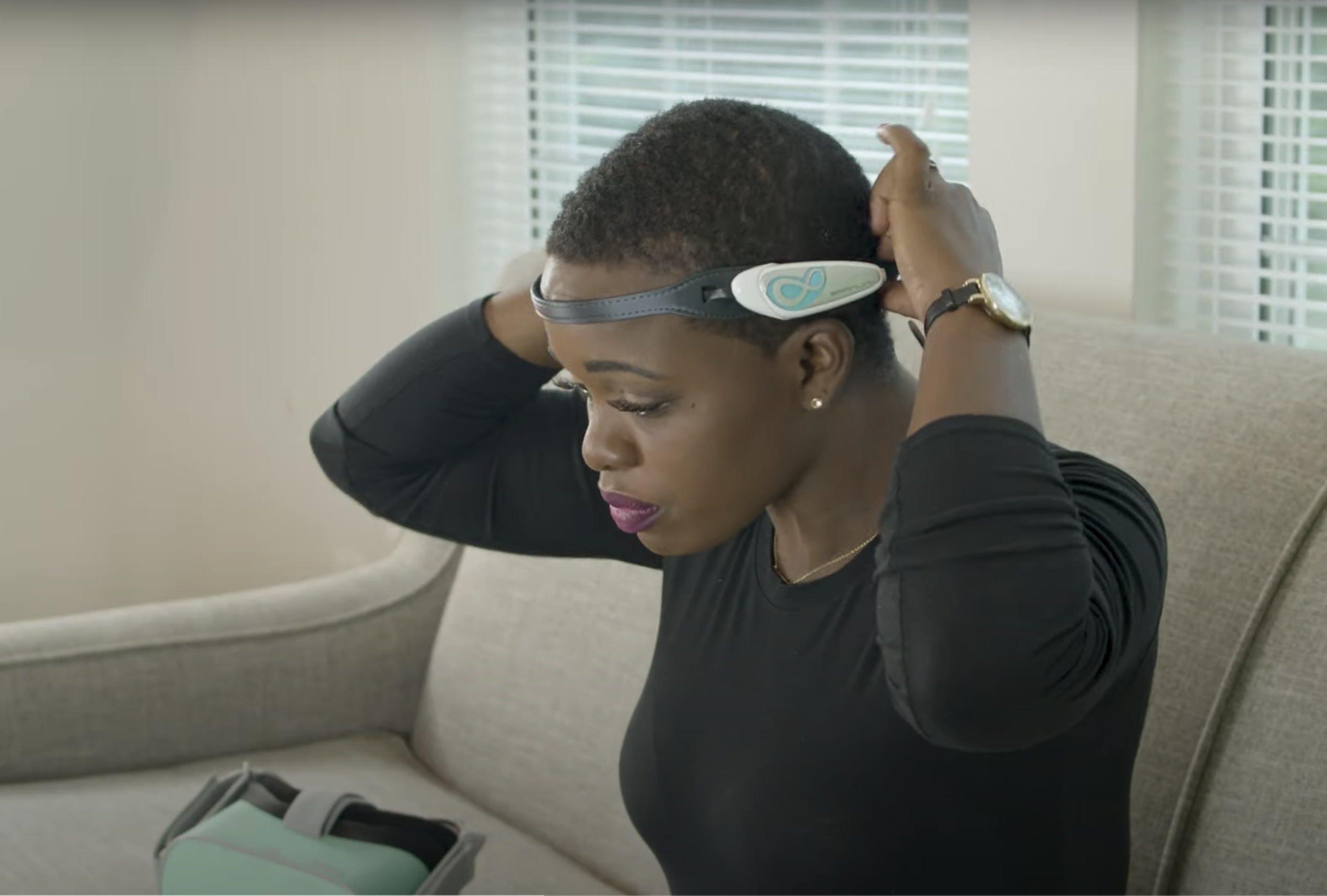
The headband has three sensors that are located on the strap that goes across your forehead, essentially monitoring your brain’s electrical activity. Through this neurofeedback connection, a representation of your brain patterns is displayed visually in near real-time within the Healium’s VR and AR apps.
To improve your focus, you want your slow brain waves (theta) to go down and your fast brain waves (beta) to go up. Ideally, the frontal lobe needs to be engaged.

To improve feelings of calm, you want the opposite; you’re trying to reduce fast, high beta activity in the frontal lobe.
The algorithm built into the app takes these ratios into account. Inside the Healium app, you’ll see a firefly go above the baseline when this criteria is met, meaning you’re successfully meeting the mark for focused calm when using the BrainLink, or a lowered heart rate when using the Apple Watch.
If you’ve ever attempted meditation or mindfulness before, you might have given in to the distractions around you or found it hard to focus.
With feedback displayed to you in real-time, you know whether or not you’re hitting the mark. Are you recalling a calm memory? Are you letting your mind wander? How are you responding to the experience and the story?
Feedback lets you know if the experience is working. This can lead to an advanced mindfulness practice with an enhanced awareness of your mind/body connection.
Below is an example of what you’ll see inside the virtual reality app when paired with a BrainLink EEG headband.
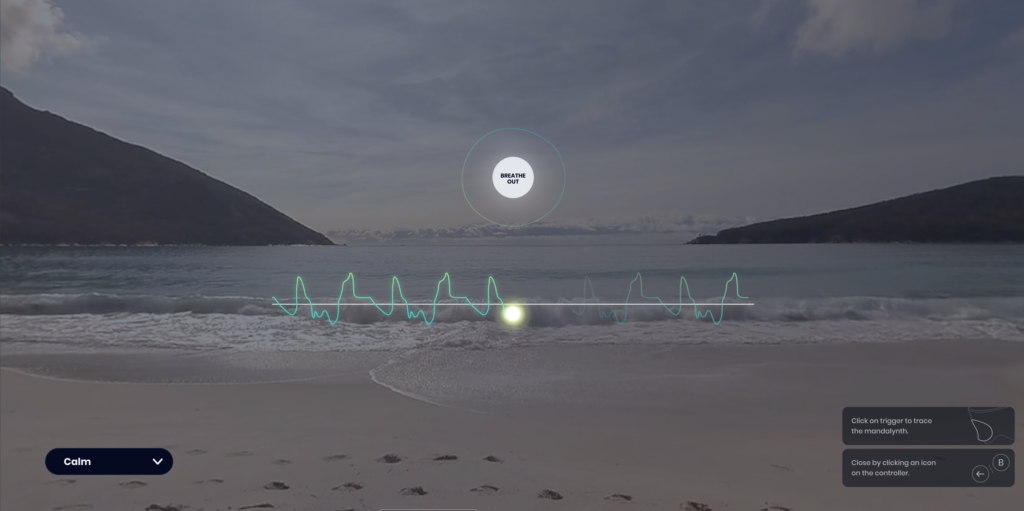
The ability to be guided back to the goal makes it attainable and encouraging when you’re doing well. Many Healium users report the same experience.
Ellen, a subscriber to Healium says, “Healium is my first real VR experience and it’s easy to use for what I call my own self-care. As someone who has managed with anxiety and depression my whole life, the experiences are calming, lovely, peaceful, and truly relaxing.”
As an added psychological boost, you’ll feel rewarded when you maintain your firefly above the baseline.
Interestingly, our perception isn’t always accurate. In a study conducted by the NeuroMeditation Institute, users reported how they felt before and after using the Healium AR app.
Everyone reported decreases in negative emotions and increases in positive emotions, regardless of whether they were using biofeedback or not. However, participants using biofeedback showed changes in their physiology whereas the other group didn’t.
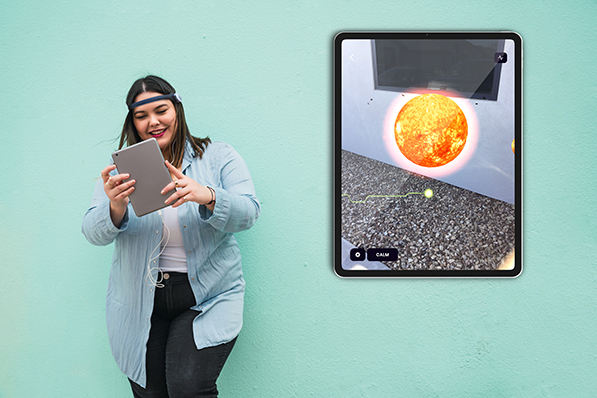
That’s where biofeedback can help improve your awareness of your feelings and your ability to influence them. What you’re thinking you’re feeling vs what you’re actually feeling isn’t always connected. Over time, this connection can grow stronger which can boost your mental resilience.
Feelings can be controlled. They don’t happen to us. But with biofeedback you can control anything you can measure. Remember that your thoughts have power…in the virtual world and in the real world as well.
Note: The data from a consumer wearable is not diagnostic. It is valuable as a self-awareness tool to better understand how your brain patterns and heart rate react to your thoughts.